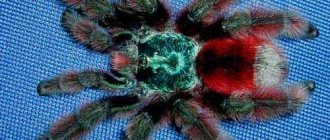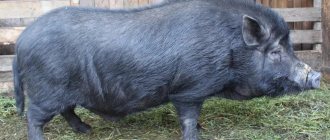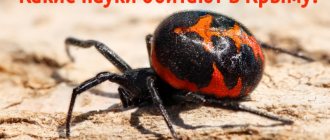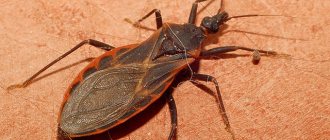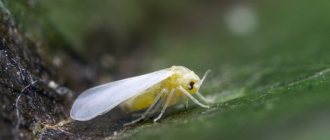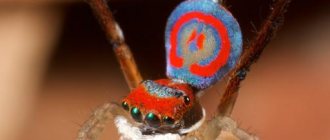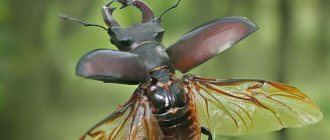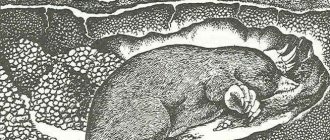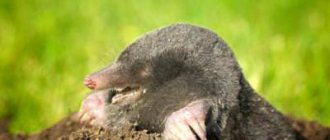When the summer season arrives, many summer residents and gardeners are faced with a pest problem. A dug up area, eaten or spoiled crops and characteristic holes terrify many.
Sometimes it is not easy to determine who is digging holes in the garden, because this is not always the work of a mole. And moles do not drag away plants and do not gnaw the roots, because they prefer to eat insects.
In this article, we will figure out what pests can dig up a summer cottage and how to deal with them.
Mole rat
In many ways it is similar to a mole, although it is larger in size, but the marks it leaves behind are about the same. The main difference is that mole rats are voracious rodents, and the fight against them can be painful and long.
Mole rats are usually no more than 32 cm in length. They have very short legs and gray fur. The tail is not visible, as it is too small, the eyes are reduced and hidden under the skin.
The widest part of a mole rat's body is its head. If you look at the animal from above, it resembles a shovel. The mole rat's front teeth are long and protrude.
This pest especially loves potatoes and carrots; it affects garlic and beets, onions and bulbous flowers. It can also damage other plants, such as corn or beans.
The fight against mole rats, due to their underground lifestyle, is not always effective, but is still possible. Just remember that there is a giant mole rat listed in the Red Book.
Usually, when the entire garden is in holes, the summer resident is not particularly concerned about who did it, just to exterminate the pest. The giant mole rat is distributed mainly in sandy and clayey soils near water bodies.
They can be found in the Caucasus, in Dagestan, near the Terek, Sulak and Kuma rivers. It may turn out that just such a rare animal lives on your site.
Giant mole rat
Common mole rat
Mole rat minks
There are several ways to get rid of the pest.
The first way is to set traps. This method is not very effective, because mole rats are smart and cunning. It is best to get mole traps. When fighting a mole rat, you can be cunning.
Animals do not like open areas and wind, so you can dig up their hole and make another smaller one next door. Place a trap in the hole and cover it with something. When choosing from two options, the mole rat will, of course, choose the more protected one and will most likely fall into a trap.
The second way is to flood the holes. The mole rat is quite helpless against water. But if your soil is sandy and absorbs moisture well, then most likely this method of control will not suit you.
The third way is to use poisons and chemicals. But it may also not work. If there is enough food for a mole rat in your area, then it will not even look in the direction of the poison.
The fourth method and one of the most effective is noise and ultrasound. Mole rats hate noise. Therefore, installing noise repellers will not be superfluous. One of the surest methods is a vibration-sound repeller.
Gopher
The gopher is an underground dweller that can be found in Central America. It has the following dimensions:
- length – 9 – 35 centimeters;
- tail – 4 – 14 centimeters;
- weight – 1 kilogram.
In most cases, gophers live underground, and their housing most often includes complex underground passages. It is assumed that the passages are laid in different soil horizons. The length of the tunnels often reaches 100 meters.
Shrew
The animal is similar to a vole, but has two obvious differences - a much longer tail and an elongated muzzle. There are two types of shrews: shrews and shrews.
The shrew reaches a size of no more than 7 cm and is gray in color, but most often a shrew with brown fur and no more than 5 cm in length appears in the garden.
shrew
Shrew
Don’t be fooled by the appearance of the animal, because just how cute a shrew looks in the photo does not mean that the damage from it will be minimal. In just a couple of days, the entire area can be dug up, and the lawn will be full of tussocks.
The shrew has a high metabolism, so it is constantly looking for food, which results in furrows like those in the photo of its burrows.
The baby feeds on insects, and it would be quite useful if the harm it causes were not many times greater than the benefit. In a day, it destroys pests several times its own body weight.
The furrows it creates help the earth to become saturated with oxygen. But the fact is that there is usually practically nothing left to grow on such land - the shrew gnaws through the roots and plants that stand in its way.
The first way to combat shrews is with poisons and chemicals. Products such as Anti-Rodent are used against animals. It is important to remember that the poison can be dangerous for pets or children, so be careful and read the instructions for use.
The second method is to flood the shrews' burrows. In this case, it is better to flood any hole that causes suspicion.
The third way is to use items with a strong, unpleasant odor. Shrews have a very delicate sense of smell, so they cannot tolerate strong-smelling things. Place rotten fish or eggs in the holes. The shrew will not tolerate such aromas and will leave the hole.
Using traps against shrews is ineffective. And any of the above methods does not provide a 100% guarantee. Shrews can easily come back to your site, so you should be very careful.
Vole
Looks like an ordinary mouse. Body length is no more than 13 cm. The color is brown, and gray on the tummy. Unlike the shrew, the vole will feed on your crop.
She likes roots, shoots, leaves and sometimes even seeds of some plants (for example, beans). It is even more prolific than the shrew - the field mouse is capable of reproducing offspring up to 7 times per season, 5 and sometimes 12 babies each.
In winter, voles are protected by a layer of fallen snow, so pests may simply not survive snowless winters. In winter, they can harm raspberry bushes and gardens.
Below is a photo of field mouse burrows. Pests usually live in groups and dig branched, complex tunnels. But this happens at a shallow depth - from 15 to 35 cm. Regular weed removal and timely harvesting can be used to prevent the appearance of voles on your site. But alas, even taking all the precautions cannot guarantee that you won’t get a vole.
So, what to do if field mice are already infested on your property?
Important! In general, the basic methods of controlling rodents in a summer cottage are approximately the same for shrews, voles, and rats.
The first way is to get a good, not lazy cat. Of course, if you take a kitten, things will not go the fastest, but this method can scare away voles for a long time and protect your area.
It would not be the wisest decision to use traps, since they are effective in the presence of only a few pests, and the number of voles tends to increase quickly.
The second method is poisoned baits and toxic substances. For example, you can make lumps of dry plaster and flour or other treats. Voles love to drink after eating, and gypsum congealed in the stomach will lead to immediate death. You can flood the holes, treat them with poisonous gases, or use an acute poison, after consuming which the animal will die.
Voles are smart, so if you choose a poison, it is better to choose one that the rodent needs to eat once than substances with a cumulative effect. The third method is smells and noises. A variety of ultrasonic repellers work effectively. Also, voles cannot tolerate the smells of elderberries and nuts, and they really do not like the aromas of essential oils. Therefore, you can put walnut leaves, elderberry, even garlic or a piece of fabric soaked in essential oil or, for example, kerosene in their hole.
The fourth method is ammonium nitrate solution, 3%. It needs to be poured into the hole (about 1 cup) and trampled on top. Ammonia is harmful to voles.
Krawczyk (snow beetle)
A representative of the dung beetle family. Only it differs from its relatives in that it feeds on herbivorous food. It was nicknamed the shear beetle because it literally cuts off plant stems with its powerful jaws.
The beetle is black, up to 2.5 cm in length. Its head is large and very noticeable, for which it is also called the bigheaded fish.
Red minnows dig deep burrows for themselves, which are quite complex and large. This happens mainly in early spring, during the mating period. Then the female begins building a burrow. A common, not yet branched burrow sometimes reaches up to 70 cm in depth.
From greenery and their secretions, they form enough cubes to fill a hole. The beetle larvae will subsequently feed on this mass. Next year the number of kravchiks will increase, and all cycles will be repeated again and again.
Kravychiki greatly damage corn, sunflowers and, of course, grapes. These beetles stock up on food for their children so carefully that they are able to literally cut off all the seedlings.
Chemicals are not very effective at getting rid of those that live deep in the ground. As a preventative measure, we can recommend a thorough and deep (60–70 cm) digging of the area. This depth should be enough for the holes to freeze over the winter. The main way to get rid of snow beetles is to pick them up by hand.
You can loosen the ground, filling up the entrances of holes, you can dig around the area around the perimeter, putting grass treated with special substances - pyrethroids - into the resulting grooves, but in any case you will have to collect pests and monitor their appearance.
Another effective method is to pour the most fragrant and cheapest vegetable oil, diluted with water, into the burrows, and after the minnows come out, collect and destroy them.
Rat
Rats are very smart. And also, like any rodent, they are dangerous because they are carriers of many diseases. In the countryside, you can most often find a gray rat. People call it pasyuk.
It is quite large, can reach 27 cm in size. Pasyuk is omnivorous and swims well. It is he who digs holes in vegetable gardens, not particularly deep, but branched.
The rat is prolific - per year it can give birth to 3 litters of up to 10 cubs each. This large pest will also fight a large enemy if there is no place left to run to. Pasyuk can even attack a person.
Due to the mole cricket's addiction to cabbage, it is also called cabbage.
The cabbage nests are shallow - only 10–15 cm from the surface. In them, the female takes care of her offspring. The nest has many branches and exits.
The female regulates the conditions inside for the best development of the larvae - she opens and closes the entrances, gnaws out the roots of plants so that the nest warms up better. So the root system of plants is sufficiently affected, which leads to their death.
The mole cricket can overwinter in the ground at a depth of up to 2 m, and can also overwinter in manure. Often it is with compost that it ends up in gardens.
Fighting mole crickets, like other pests, is not easy. Getting rid of cabbage weed needs to be approached comprehensively, focusing on its characteristics and habits. Let's look at some preventive and preventive measures.
The first method is loosening and digging. You should try to dig no less than 15 cm deep. This procedure needs to be done about 3 times throughout the entire season. This way you will find mole cricket nests and eggs in the soil.
The soil with eggs must be removed from the garden - poured into a bucket or other container. And if you come across an adult mole cricket, then it also needs to be destroyed - crushed or chopped.
The second way is to lure with manure. In the spring, you can spread heaps of compost around the garden - mole crickets will find this a good place for their nests. Check the piles periodically, and if you find eggs or an adult, destroy them.
Medvedka
The mole cricket is a large insect whose body length can reach 5 centimeters. The visual differences will be as follows:
- the size of the abdomen is 3 times larger than the cephalothorax;
- the abdomen may be soft in structure and may have a fusiform shape;
- diameter – 1 centimeter;
- At the end of the abdomen, paired thin thread-like appendages are visible.
The insect is primarily inclined towards an underground lifestyle. Despite this, it is capable of flying well, running on the ground and even swimming. The insect almost never gets to the surface of the earth. Even if a mole cricket gets to the surface, it happens in the dark.
Folk methods of struggle
Rodents have a very developed sense of smell and touch; in addition, the shrew has well-functioning echolocation. Therefore, one of the most well-known and effective methods of control is to scatter pieces of herring around the area. It will begin to disappear and emit an unpleasant odor, which will scare away the shrew, but at the same time cause a lot of inconvenience to the owners of the site and their neighbors.
There are other folk ways to fight shrews:
- Deep digging of the garden. To do this, the entire area is dug up with a shovel to a depth of about 70 cm. This will not be easy to do, it is more suitable for small areas;
- Place eggshells in the hole;
- Plant legumes, marigolds or spurge around the area. It is known that the shrew does not like these plants and may soon leave the area due to unfavorable conditions.
Sometimes pets – cats – help in the fight against pests. They hunt pests for fun and thereby help their owners, but not every cat will do this.
Mole: description, lifestyle, reasons for appearing on a summer cottage
A mole is a small predatory mammal with short legs that belongs to the order of insectivores. It has an elongated body with thick velvety fur. The animal's fur is black-brown or dark gray. The body length of an adult reaches 15–20 cm. Moles have underdeveloped eyes (they lack a retina and lens), and the eye openings themselves look like narrow slits covered with movable eyelids. In some species, the eyelids are completely fused together. The lack of vision is compensated by an excellent sense of smell and touch.
How to find a nest
The shrew prefers moist soil. They live independently, one at a time. Each digs an individual passage for movement, and they occupy the empty holes of other animals. Sometimes they live in the voids of stumps, in tree trunks, sometimes in human dwellings.
They line their nests with dry grass. Each individual has its own habitat, approximately 10m2. This is quite enough for food.
Who lives in the ground?
Not only earthworms live in the soil, but also their closest relatives, small whitish annelids (enchytraeids, or pot worms), as well as some types of microscopic roundworms (nematodes), small mites, various insects, especially their larvae, and, finally, woodlice, millipedes and even snails.
Interesting materials:
Why do shoes rub my feet? Why is the chameleon crazy? Why one tick in telegram? Why do cucumbers turn white in a jar? Why are cucumbers in a barrel soft? Why do cucumbers grow soft? Why do chicken legs stick to the pan? Why are olives different colors? Why do olives with pits taste better? Why doesn't tin stick to metal?
Chemical methods of control
Chemicals should be used as a last resort when others have failed. The most successful would be to use:
- Special poison for mice and fill each hole with it or sprinkle it before entering it. It is important at this time to remove children and pets away from the area where chemicals are used or choose another method of control;
- Gas bombs. They are suitable only at the very beginning of the shrew’s settlement, since over time it appears more and more tunnels, and it can hide in the opposite area;
- Diesel oil and gasoline. They are poured into the hole, but this method only helps at the very beginning of the appearance of the shrew.
All these methods are suitable for combating shrews, but they should be used away from fruit trees, vegetables, fruits and berries and it is better to give preference to repellers that will repel animals from the area without harming them.
Mechanical methods of struggle
Traps and snares do an excellent job. Specially purchased mouse baits are placed in them. You can use tin pinwheels placed around the perimeter of the site. The noise they make will cause discomfort to the shrew, and it will be forced to leave the area.
An electric repeller will cope with the task in the shortest possible time. Its radius of action is about 20 m. The sound it produces is not perceptible to people and pets, but mice, moles, snakes and other pests will instantly disappear from the area.
There are many ways to fight shrews, the main thing is to choose the most suitable one without harming yourself, others and your own harvest.
The ground rat, also known as the field mouse, is a large representative of the mouse family. Digs holes in the ground and comes out mainly at dusk. All summer he is busy preparing food supplies for the winter. And those individuals that were unable to do this make their way closer to human habitation.
Naked mole rat
This rodent is small in size and belongs to the mole rat family. The main difference is cold-bloodedness, increased resistance to the conditions of the underground world. The naked mole rat is one of the longest-living rodents, being able to successfully live up to 28 years. His appearance turns out to be truly terrible.
This underground resident is ready to surprise with its size:
- the minimum body length is 25 centimeters, and the maximum is 35;
- weight reaches one kilogram.
Body color can be ocher-brown, gray-fawn or light. In any case, appearance cannot be considered pleasant.
The giant mole rat leads only an underground and sedentary lifestyle, and it tries to build multi-tiered passages. Cutters are used to make passages.
The average characteristics of underground residential facilities for the giant mole rat are provided:
- the diameter of the stern passages ranges between 11 and 16 centimeters;
- depth does not exceed 50 centimeters;
- sandy soil layers are used to make passages;
- Special emissions appear on the ground surface, made in the form of truncated cones. Moreover, their height is about 30 – 50 centimeters, and their weight is 10 kilograms;
- the length of the feed tunnels can be 500 meters;
- the tunnels include numerous additional objects that are located at a depth of no more than three meters. In this case, the underground inhabitant cannot approach more than 90 centimeters to the ground surface.
The giant mole rat is one of the most powerful and formidable inhabitants of the underground world. This proves the presence of terrible teeth that can even break a shovel.
Appearance of the animal
The appearance of the animal is more similar to mice than to rats:
- rounded body, large head with a blunt muzzle;
- small round ears, barely noticeable;
- the eyes are round and large enough;
- massive paws with long toes and slightly rounded claws.
There are still differences between rats and mice. The rodent's body length is about 22 cm. The tail is narrow, long, covered with thick, hard hair. There is a small brush at the tip. The coat is soft, but there are long, stiff fibers throughout the body. In winter, the cover becomes denser and fluffier. The weight of the animal is about 350 g.
The color of the ground rat depends on its habitat and age. The back is always darker than the sides. Mainly brown with tints of different tones of brown.
The abdomen is dirty white. Available in red or completely black. The yellow earthen rat looks like a hamster. The only thing that gives it away is its long tail and the absence of a light stripe along the back. A photo of an earthen rat is presented below.
Tuco – Tuco
Tuco-tuco are small rodents:
- weight – 700 grams;
- body length does not exceed 25 centimeters;
- The length of the tail is about eight centimeters.
Such sizes are direct evidence that tuco-tucos are ideally adapted to underground life. In addition, rodents are actually ready to build various residential objects from soil and sand, ideally adapted for the constant residence of a tuco-tuco.
Habitats
The ground rat prefers to settle near bodies of water. Burrows are found on the banks of swamps, rivers, and lakes. They go 80 cm deep. In length they are placed at a distance of 20 cm from the soil surface.
Deep chambers are intended for wintering. The rodent spends most of its time in the upper ones. Earth rats build entire labyrinths with several entrances and exits, chambers for storing food supplies, and nests. They build nests from all available materials - grass, sticks, twigs, needles, paper, pieces of fabric. There the rat rests and breeds.
Ground rats are forced to leave their previous habitats by unfavorable conditions - flood, drought, lack of food, premature frosts. In this case, rodents make their way to fields, orchards, and vegetable gardens, causing significant damage to crops.
Nutritional Features
Field rats prefer grain, cereals, flour, seeds, root vegetables, and juicy grass. It also feeds on small insects, fish, frogs, and mollusks. The land rat swims well, dives well, and is capable of foraging underwater.
The lack of food in the wild forces the animals to move to fields with grain crops. Rats dig holes in the ground, disrupting plant growth. With a large number of rodents in the field, it is impossible to harvest the crop using machinery. The spikelets fall, crumble, and get tangled.
The damage caused by the earth rat is irreparable for gardeners, gardeners, and farmers. A large colony of animals can destroy the entire crop. Animals are forced to sharpen their front teeth on hard surfaces to prevent their growth. They often gnaw tree bark. An attack by a large number of pasyuki is dangerous for poultry and animals.
Rodent control
If the relocation of the earth rat to the fields occurred due to flooding, you can take emergency measures, but do not worry too much about it. When the water recedes, the entire colony will return to its original location, since the animal cannot live without water.
A ground rat in a garden is a real disaster. The animal digs numerous tunnels, disrupts the growth of crops, and also gnaws on crops. If you let everything take its course, you can end up with nothing. Young trees suffer from the presence of voles.
Rodent control products
- It is not recommended to use strong poison for rats. The poison accumulates in crops and threatens the lives of birds, farm animals, and humans themselves. Preference is given to traditional methods with a deterrent effect. There is no need to exterminate voles; you need to force them to leave the territory.
- You can get rid of the ground rat using Vishnevsky ointment. The drug is diluted in water and the holes are watered. Or they treat the floors if a rodent has entered a house, barn, or barn.
- Wood ash is a universal remedy for pests among animals and insects. Small particles stick to the fur, get on the skin, causing irritation and severe burning. The rat will feel constant discomfort and disappear from the garden in a matter of days.
- Animals are afraid of black elderberry. If earth rats often appear in your dacha, you need to plant plant bushes in the corners of the plot, it will help drive out and prevent infestation. If this is not possible, they simply lay out bunches around the garden. Elderberry contains toxic substances.
- You can smoke a rat out of a hole with the smell of burnt wool and feathers. They set fire to old clothes, threads, or a dead mouse. Smoking with smoke and an unpleasant odor is a particularly effective method. You will have to smoke for several evenings.
- The weed can stop water rats. One option is burdock seeds. Bundles are laid out across the plot of land. The spines cling to the fur, dig into the skin, and cause discomfort.
- 2 buckets of water are poured into the hole. One is not enough, since the animal can dig a whole labyrinth of passages in depth and breadth. You will have to gradually drive out all the pests.
- A homemade trap made from buried cans is also a surefire way to catch pests. Dig holes throughout the plot of land and insert a 1 liter container. Getting rid of traps from jars is much more convenient than using regular mousetraps.
Everyone chooses control measures for themselves individually. However, you should always remember the safety of yourself and those around you. Poison is not prohibited; it is better to do without it in the garden.
Useful tips
Professional products for fighting the rat family are produced in different variations. You can offer poison-treated grain to pests, or use gel bait. It contains a potent poison, flavorings to attract the attention of animals, and flavoring additives. It must be placed near the minks.
If the animal dies in a hole, there is nothing to worry about; on the surface, it must be buried so that birds and neighbor cats do not get hurt.
With the constant invasion of voles in gardens, it is necessary to ensure the tightness of the area. Build a fence around it with a cemented base. The animal will not be able to make moves in the cement.
Karbyshi in the garden plot
The hamster causes great damage to garden plots. His activity in the garden begins during the seedling period. At this time, the karbysh (animal) cuts off the sprouts of cabbage, pumpkin, cucumber, carrot, and onion seedlings as if with scissors.
In the summer, the animal destroys the fruits of zucchini, carrots, pumpkins, and beets. The rodent loves onions and garlic. Doesn’t refuse squash and potatoes. Gnawing out tubers and roots from plants. At this time, the pest not only destroys crops, but also stores potatoes, carrots, and seeds for the winter.
Karbysh is very voracious, and it causes significant damage in the garden. Whatever he can't eat, he takes away with him. Gardeners are forced to constantly fight it.
